
NGC 6240, also known as the Starfish Galaxy, is a nearby ultraluminous infrared galaxy (ULIRG) in the constellation Ophiuchus. The galaxy is the remnant of a merger between three smaller galaxies. The collision between the three progenitor galaxies has resulted in a single, larger galaxy with three distinct nuclei and a highly disturbed structure, including faint extensions and loops.

NGC 4414, also known as the Dusty Spiral Galaxy, is an unbarred spiral galaxy about 62 million light-years away in the constellation Coma Berenices. It is a flocculent spiral galaxy, with short segments of spiral structure but without the dramatic well-defined spiral arms of a grand design spiral. Four supernovae have been observed in this galaxy: SN 1974G, SN 2013df, SN 2021J, and SN 2023hlf.
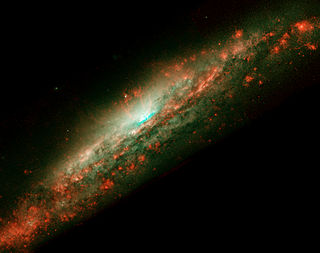
NGC 3079 is a barred spiral galaxy about 50 million light-years away, and located in the constellation Ursa Major. A prominent feature of this galaxy is the "bubble" forming in the very center (see picture below). The supermassive black hole at the core has a mass of 2.4+2.4
−1.2×106 M☉.
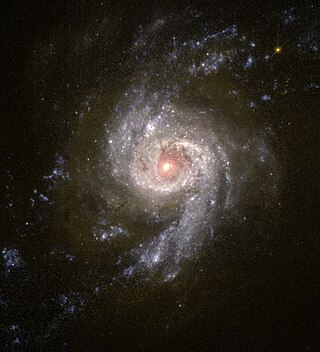
NGC 3310 is a grand design spiral galaxy in the constellation Ursa Major. It is a starburst galaxy and it is likely that NGC 3310 collided with one of its satellite galaxies about 100 million years ago, triggering widespread star formation. It is thought to be located approximately 46 million light-years away from the Earth, and is thought to be about 22,000 light-years wide.
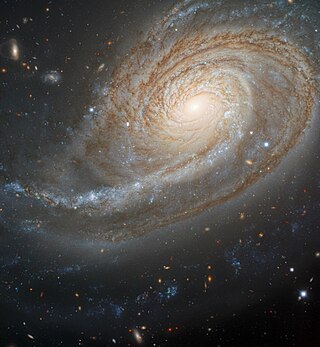
NGC 772 is an unbarred spiral galaxy approximately 130 million light-years away in the constellation Aries.

NGC 4567 and NGC 4568 are a set of unbarred spiral galaxies about 60 million light-years away in the constellation Virgo. They were both discovered by William Herschel in 1784. They are part of the Virgo Cluster of galaxies.

NGC 4027 is a barred spiral galaxy approximately 83 million light-years away in the constellation Corvus. It is also a peculiar galaxy because one of its spiral arms goes out more than the other. This is probably due to a galactic collision in NGC 4027's past.
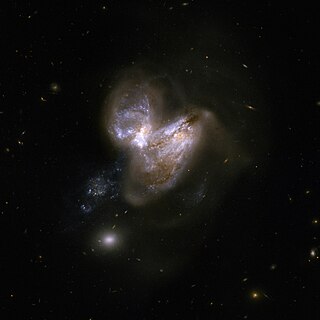
Arp 299 is a pair of colliding galaxies approximately 134 million light-years away in the constellation Ursa Major. Both of the galaxies involved in the collision are barred irregular galaxies.

NGC 1058 is a Seyfert Type 2 galaxy in the NGC 1023 Group, located in the Perseus constellation. It is approximately 27.4 million light years from Earth and has an apparent magnitude of 11.82. It is receding from Earth at 518 kilometers per second (322 mi/s), and at 629 kilometers per second (391 mi/s) relative to the Milky Way.

NGC 5490 is a radio galaxy in the constellation Boötes.

Arp 271 is a pair of similarly sized interacting spiral galaxies, NGC 5426 and NGC 5427, in the constellation of Virgo. It is not certain whether the galaxies are going to eventually collide or not. They will continue interacting for tens of millions of years, creating new stars as a result of the mutual gravitational attraction between the galaxies, a pull seen in the bridge of stars already connecting the two. Located about 130 million light-years away, the Arp 271 pair is about 130,000 light-years across. It was originally discovered in 1785 by William Herschel. It is speculated, that the Milky Way will undergo a similar collision in about five billion years with the neighbouring Andromeda Galaxy, which is currently located about 2.6 million light-years away.
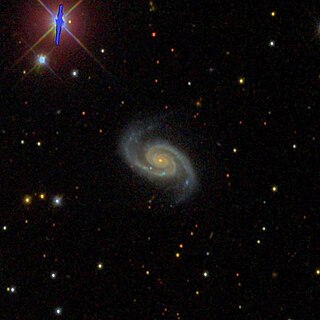
NGC 6560 is a spiral galaxy located in the constellation Hercules. It was discovered by Lewis A. Swift on 22 October 1886.
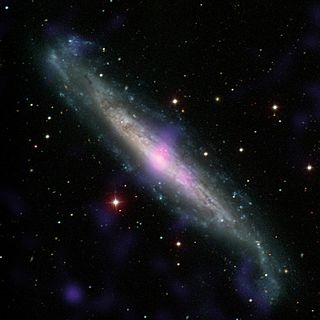
NGC 1448 or NGC 1457 is an unbarred spiral galaxy seen nearly edge-on in the constellation Horologium. It is at a distance of 55 million light years from Earth. It was discovered by John Herschel in 1835.
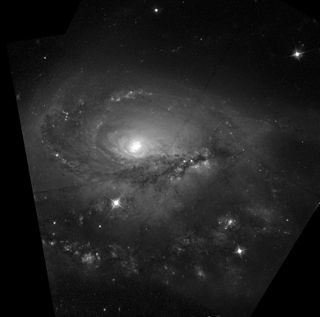
NGC 1961 is a spiral galaxy in the constellation Camelopardalis. It was discovered by William Herschel on 3 December 1788. It is at a distance of about 200 million light years from Earth, which, given its apparent dimensions, means that NGC 1961 is more than 220,000 light years across.

IC 883 is an irregular galaxy that is about 321 million light years away from Earth. It is located in the constellation Canes Venatici. Its largest radius is 1.4, and smallest 0.7 angular minutes .[b] It was discovered by Rudolf Ferdinand Spitaler on May 1 1891.
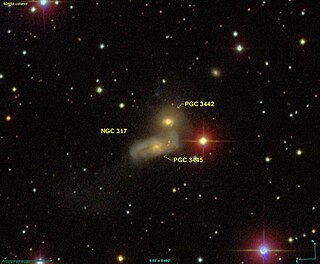
NGC 317 is a pair of interacting galaxies, consisting of a lenticular galaxy NGC 317A and a spiral galaxy NGC 317B, in the constellation Andromeda. It was discovered on October 1, 1885 by Lewis Swift.

NGC 7038 is an intermediate spiral galaxy located about 210 million light-years away in the constellation of Indus. Astronomer John Herschel discovered NGC 7038 on September 30, 1834.

NGC 7083 is an unbarred spiral galaxy located about 134 million light-years away in the constellation of Indus. It is also classified as a flocculent spiral galaxy. NGC 7083 was discovered by astronomer James Dunlop on August 28, 1826.

NGC 5468 is an intermediate spiral galaxy located in the constellation Virgo. It is located at a distance of about 140 million light-years from Earth, which, given its apparent dimensions, means that NGC 5468 is about 110,000 light-years across. It was discovered by William Herschel on March 5, 1785.

NGC 4939 is a spiral galaxy located in the constellation Virgo. It is located at a distance of about 120 million light years from Earth, which, given its apparent dimensions, means that NGC 4939 is about 190,000 light years across. It was discovered by William Herschel on March 25, 1786.




















